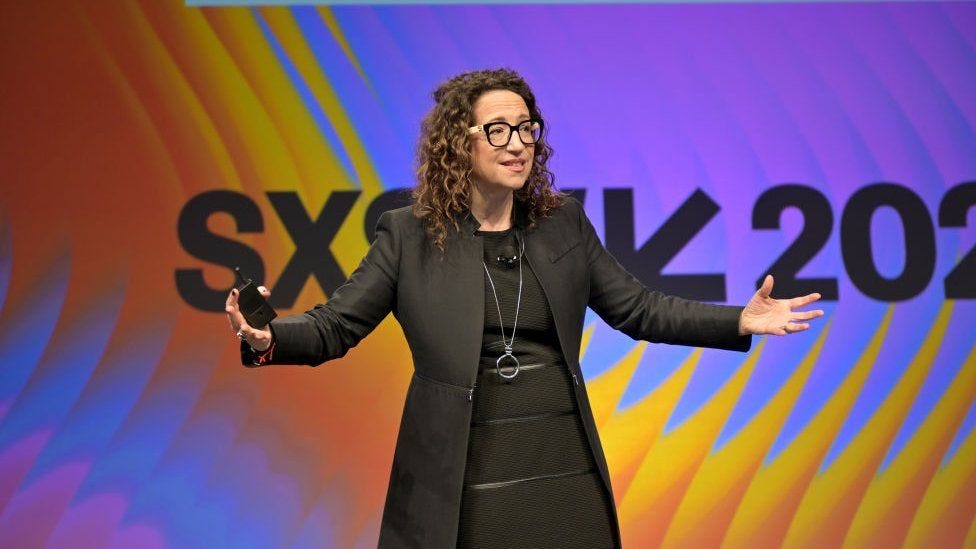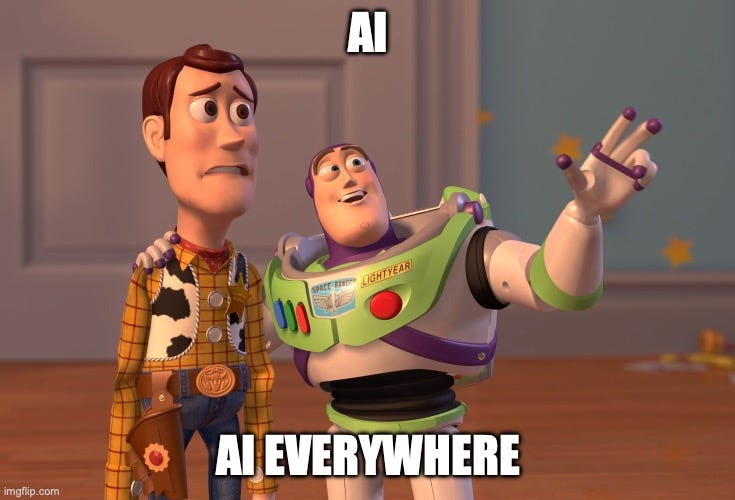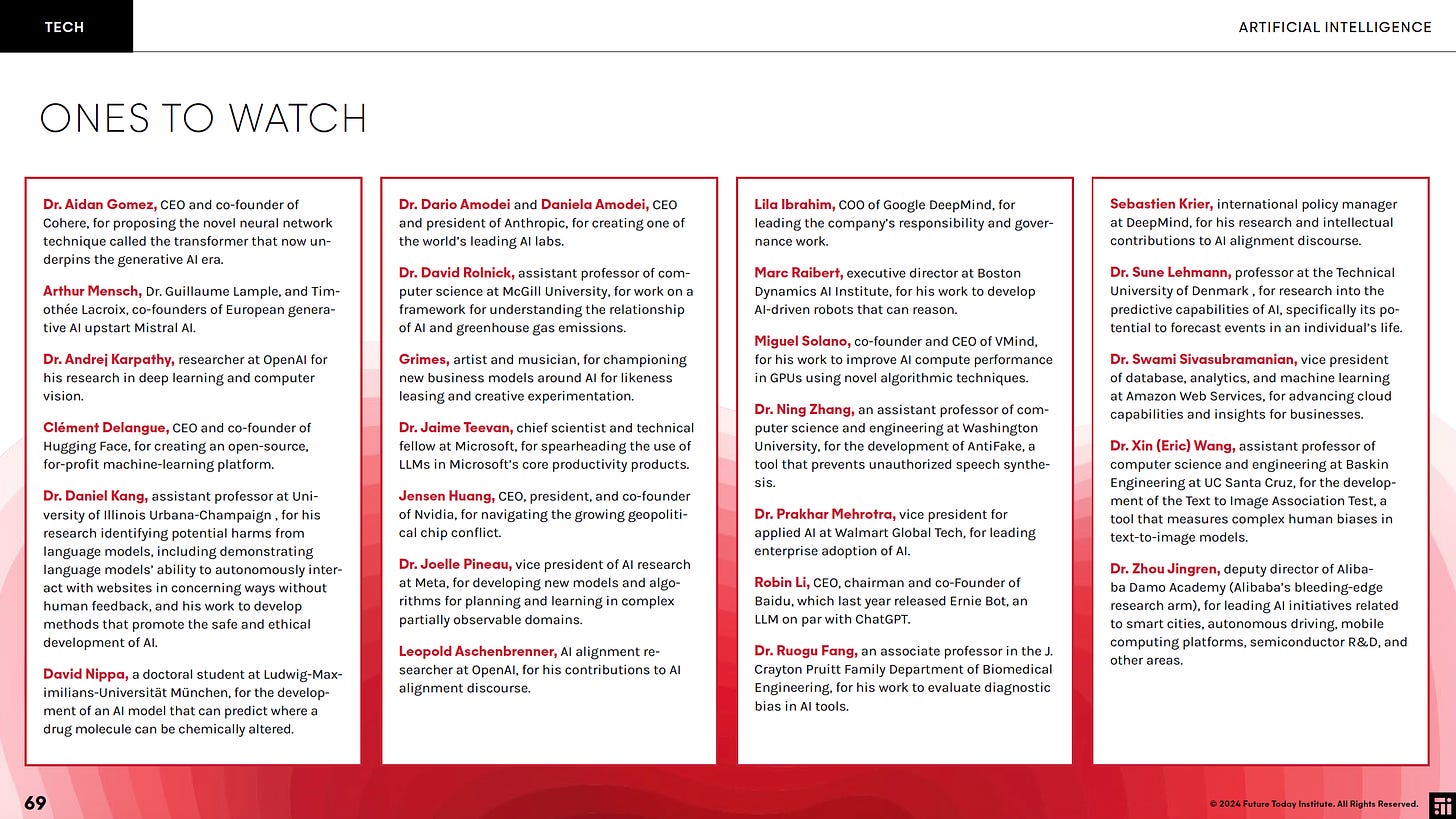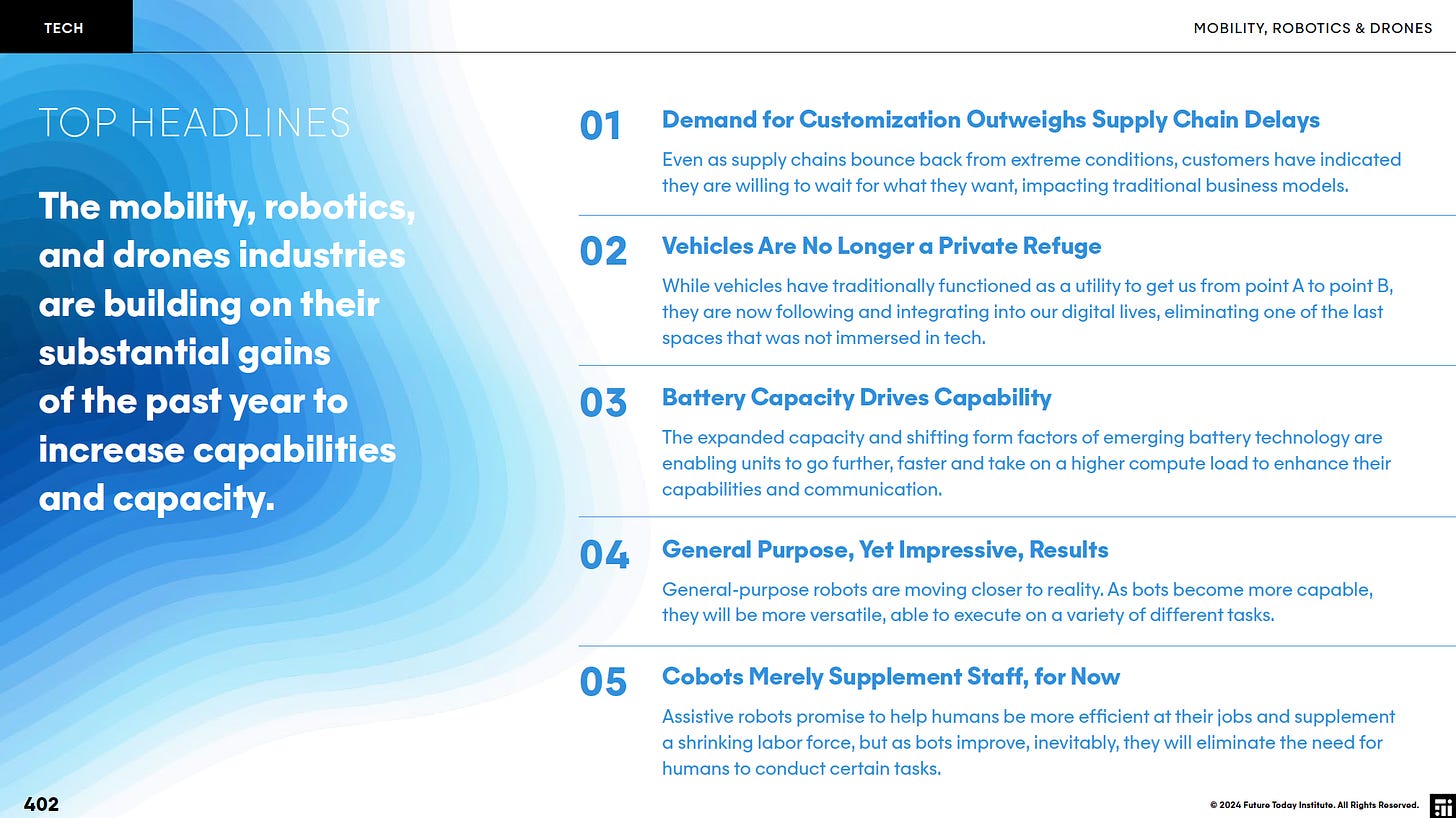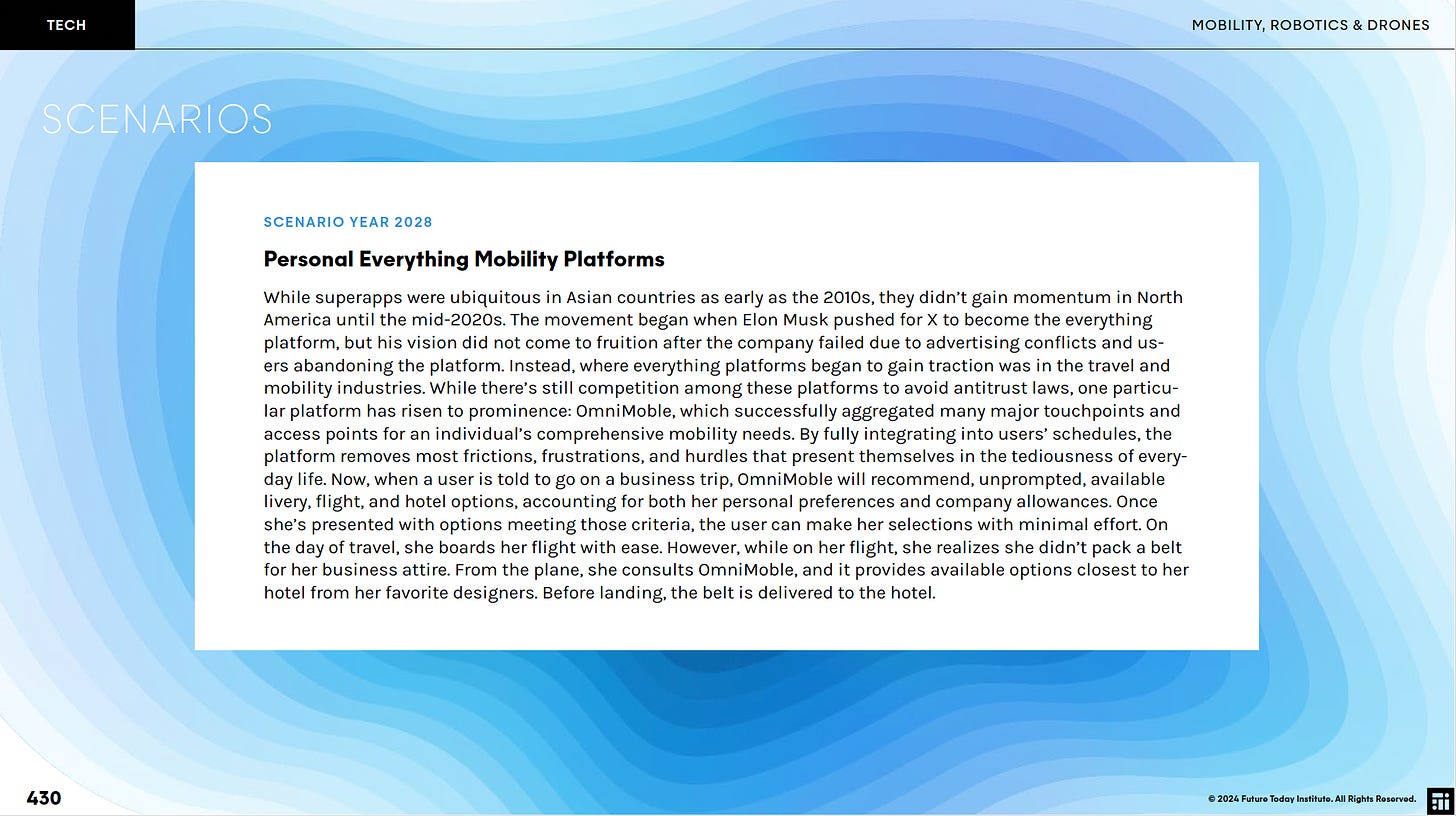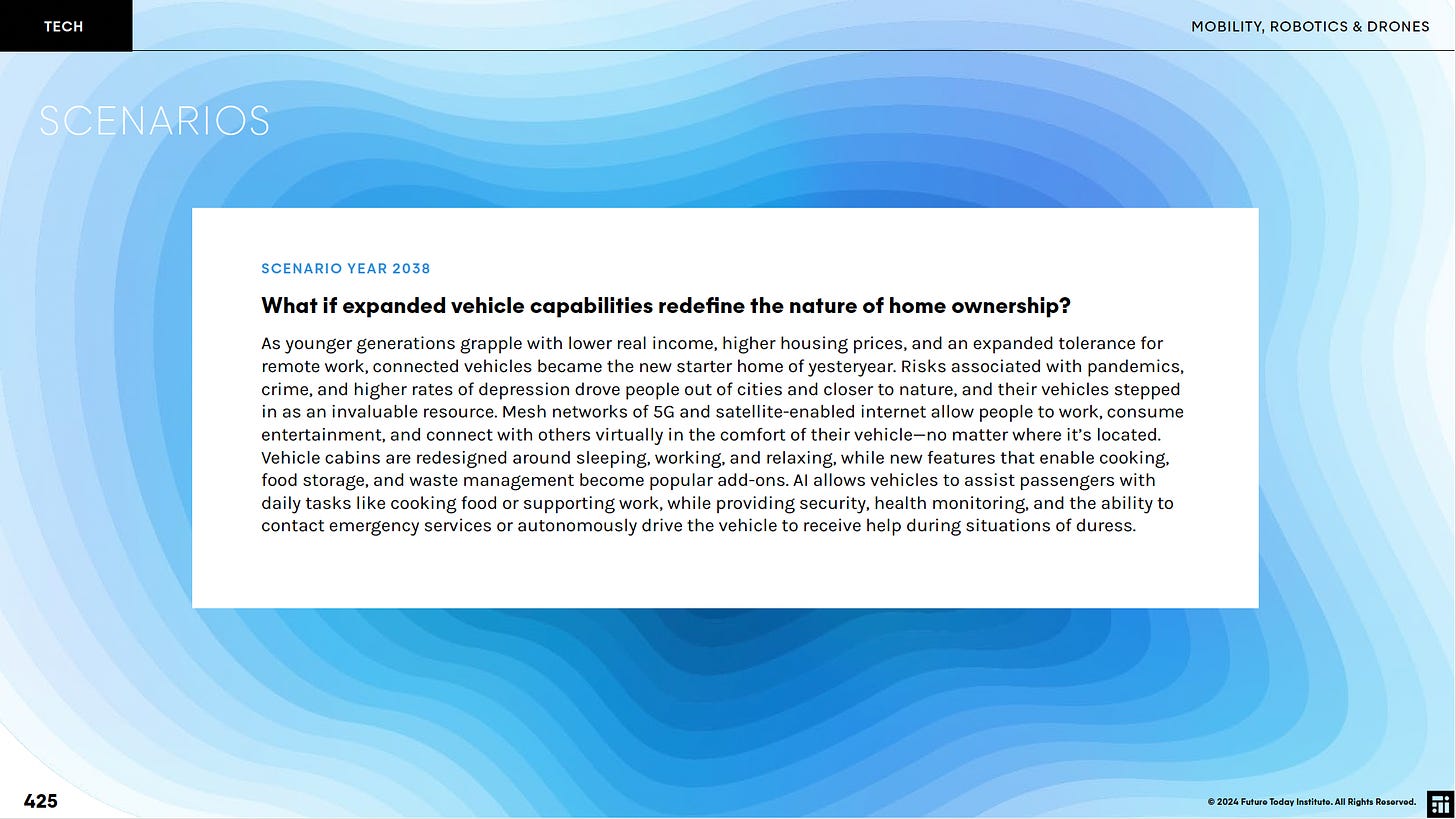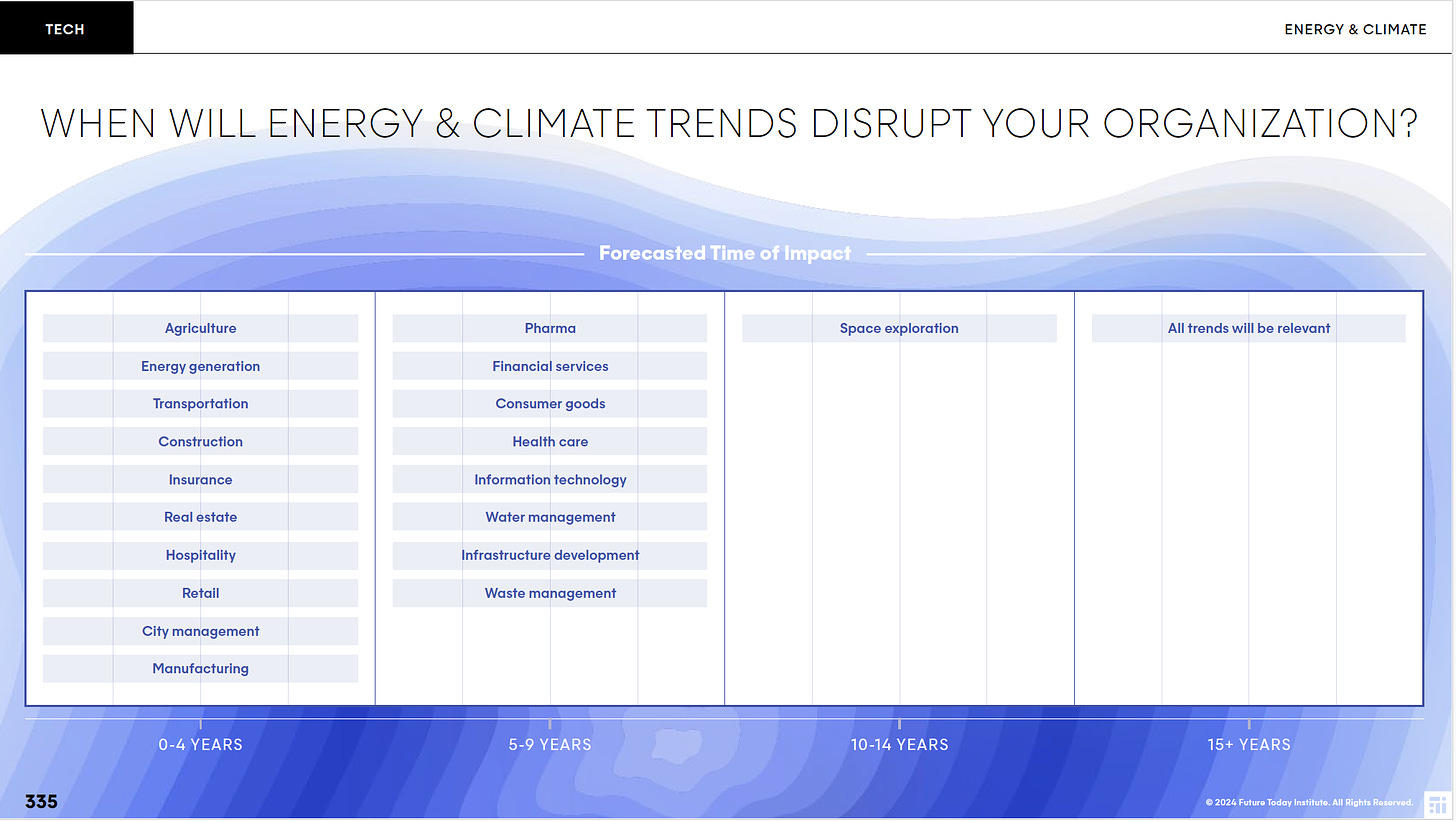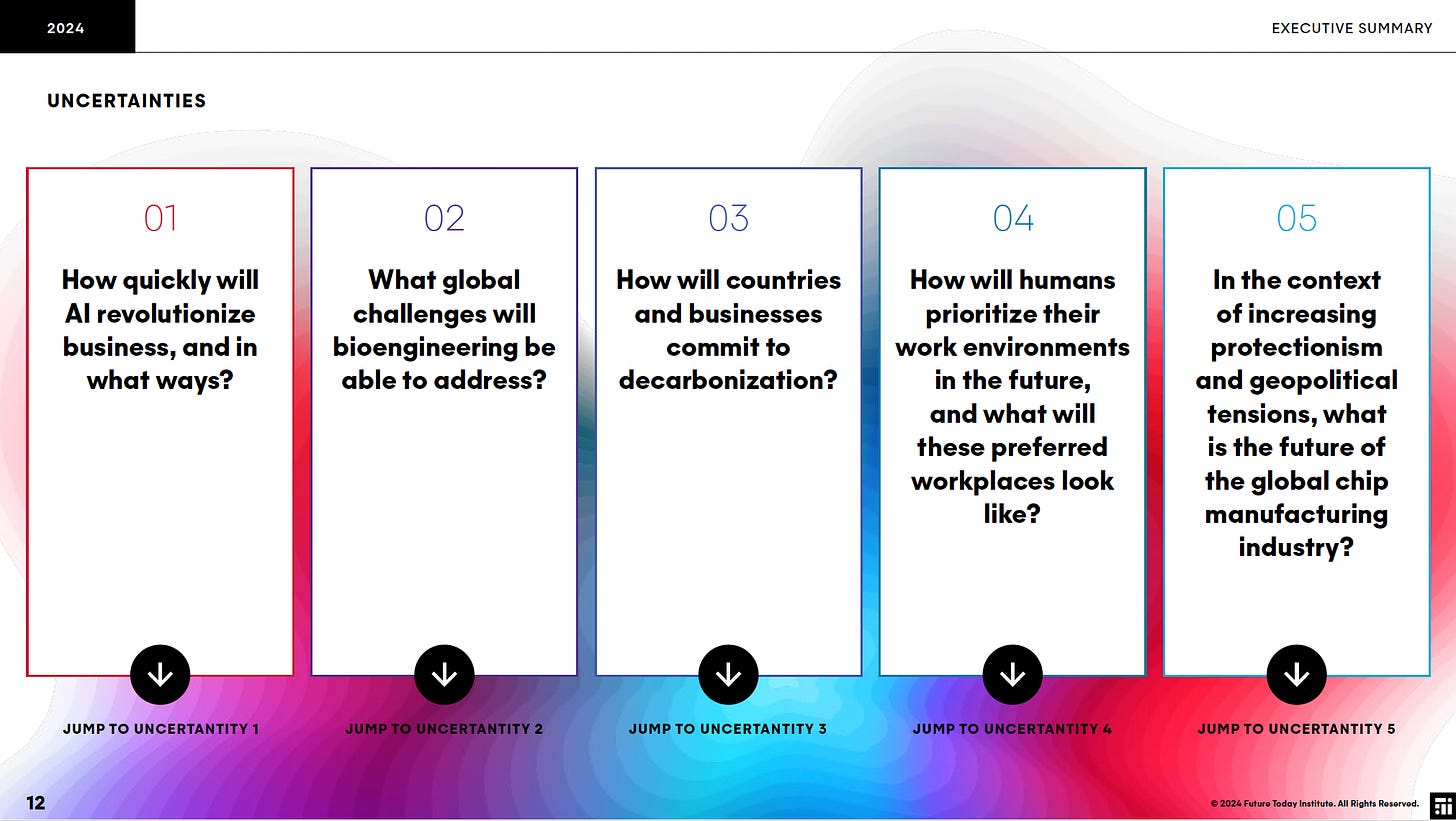Venturing Insights #1 - The Future Today
FTI’s annual Tech Trends Report is a must-read for every innovation enthusiast. Let's look at some insights from the long-awaited 2024 report!
For those of you that don’t know the Future Today Institute, it’s an advisory firm specializing in strategic foresight, driving corporate strategies that lead to long-term success and resilience.
FTI is led by Amy Webb, a quantitative futurist. She advises CEOs of the world’s most-admired companies, three-star admirals and generals, and the senior leadership of central banks and intergovernmental organizations.
Every year the FTI releases a Tech Trends report, showing the essential tech and science trends influencing every industry.
In the ever-evolving landscape of technology and innovation, the Future Today Institute's annual report serves as a compass, to navigate the path forward in an era of unprecedented change.
As outlined in the CEO's letter, the 2024 edition of the report adopts the theme of "Supercycle," drawing parallels to the economic concept of a prolonged period of booming demand and elevated prices. However, in this context, the Supercycle extends its traditional economic meaning.
“We believe we have entered a technology supercycle. This wave of innovation is so potent and pervasive that it promises to reshape the very fabric of our existence, from the intricacies of global supply chains to the minutiae of daily habits, from the corridors of power in global politics to the unspoken norms that govern our social interactions.” - Amy Webb
Impacts of New Trends on Industries
I like this chart. It serves as a true compass, indicating whether a particular trend is likely to affect your industry in the near, medium, or long term.
AI, AI Everywhere
This year is easy to say: AI, including Generative AI, is already making and will continue to make an impact on every industry in the near term.
“I think what makes AI different from other technologies is that it’s going to bring humans and machines closer together. AI is sometimes incorrectly framed as machines replacing humans. It’s not about machines replacing humans, but machines augmenting humans.” - Robin Bordoli, Authentic Ventures
Drawing comparisons to Moore’s law, which suggests the doubling of transistors on microchips every two years, there is speculation that AI's intelligence could follow a similar trajectory. If proven true, several factors would fuel this exponential growth in intelligence, including enhancements in data quality, increasing computational power, and strides in algorithm efficiency, resulting in extracting more intelligence per unit of data and compute.
Maybe I’ll dedicate an entire post on the impacts of AI and GenAI and my personal view about these.
What else we got other than AI
Bioengineering is very interesting to me. The fast combination of artificial intelligence with bioengineering is driving big changes. Soon, traditional industries like meat, dairy, textiles, and pharmaceuticals will transform. Plus, advancements will help create sustainable solutions for carbon capture, plastics recycling, and biodiversity improvement.
Trends to watch in Bioengineering are CRISPR, Lab-grown meat, Materials Engineering, Organoid Intelligence, Cyberbiosecurity and the overall Generative Biology.
AR, VR and Synthetic Media have been impacted by Apple’s Vision Pro release but also by Generative AI. For example, the rise of synthetic media in Hollywood, bosted by advancements in AI, is bringing both opportunity and ethical dilemmas to the industry. Keep an eye also on the emergence of synthetic influencers in this arena.
Metaverse and Web 3.0 remain trends with no full product-market fit yet. Blockchain has proven technological staying power, but its fit remains uncertain, and near-term events will significantly impact its potential. Regulation, adoption, and security hurdles continue to impede industry growth beyond early adopters. Companies and projects strategizing for future advancements will gain a competitive edge.
In this field, FTI sees the concept of Web 2.5 as a bridge to the new era.
Quantum is still seen for the long-run. Progress is happening, but substantially reducing errors remains an ongoing challenge. Open-source quantum software toolkits such as Qiskit and SuperConga are democratizing access to quantum circuit and material simulations, fostering collaboration and innovation in quantum computing. Likewise, open-source chip architectures like RISC-V are reshaping the semiconductor industry by liberating instruction set architectures for custom chip development. This open access facilitates collaborative problem-solving, driving progress in fields previously dominated by closed systems.
Mobility, Robotics and Drones
Since Open Road Ventures focuses on mobility and sustainability, we need to narrow our focus a bit in these areas.
While the mobility, robotics, and drones sectors have distinct differences, they share common drivers.
Electrification, fueled by consumer and ESG demands and legislative shifts, is a primary catalyst for change.
Although fully autonomous systems, especially for automobiles, remain on the horizon, advancements are evident.
Data and virtual testing environments play crucial roles in shaping these systems. Yet, challenges persist, with some companies succeeding in select markets while others face setbacks. In robotics, the vision of a fully autonomous humanoid robot remains distant, but functional robots are gradually replacing tasks.
Drones, benefiting from autonomous systems, witness annual enhancements. As the world embraces electrification and autonomy, these industries will likely diverge, aiming to drive efficiency gains.
Future Scenarios in Mobility according to FTI
In strategic foresight, a future scenario is a narrative description of a potential future state or situation that could unfold based on current trends, emerging technologies, societal changes, and other relevant factors. These scenarios are not predictions but rather plausible and coherent stories that help organizations and decision-makers explore different possibilities and prepare for potential challenges and opportunities.
One thing arises from this 2028 scenario: Multi-modal mobility.
Multi-modal mobility, exemplified by the fictionary OmniMoble, integrates various transportation options seamlessly, enhancing user experience and travel efficiency. This trend underscores the importance of providing comprehensive and user-centric mobility solutions to meet diverse needs while promoting sustainability and innovation in the transportation sector.
The 2038 scenario envisions connected vehicles as alternative living spaces, driven by economic constraints, remote work trends, and urbanization challenges. Enabled by advanced technology, these vehicles offer affordable and flexible housing options, providing security, connectivity, and convenience. This shift reflects changing societal norms and raises questions about the future of homeownership and community dynamics.
Although I find the scenario of mass adoption where "vehicle cabins are redesigned around sleeping, working, cooking, and relaxing" unlikely, one certainty is that autonomous driving will completely reshape vehicle cabins into private spaces with the possibility for OEMs and mobility providers to exploit the “power” of services.
Energy & Climate Tech
With the worsening effects of climate change, governments are exploring unconventional technologies like Solar Geoengineering, Ocean Chemistry Manipulation, and Domed Cities. In 2023, these concepts gained significant attention. Additionally, progress has been made in developing infrastructure for renewable energy, particularly in smart grids, energy storage, and carbon tracking.
In 2023, attention shifted to integrating scaled renewable energy and electric vehicles into existing systems. Venture capital focused on decarbonizing the built environment and heavy industry, driving innovation. Governments tightened ESG regulations, urging transparency in carbon emission reporting. However, increased reporting pressures risk diverting attention from effective environmental initiatives.
Expanded environmental responsibilities followed the UN's Biodiversity Conference framework, with COP28 commitments to integrate food systems into updated Nationally Determined Contributions. Lawsuits may further expand actors' liabilities for climate change effects, potentially reshaping regulation and business practices significantly.
2024 Uncertainties
To conclude, I'll share the 5 key uncertainties for 2024 according to FTI.
I highly recommend downloading the full report and exploring it further to gain insights into the industries or trends that interest you. Understanding these uncertainties will better prepare you for the future.




